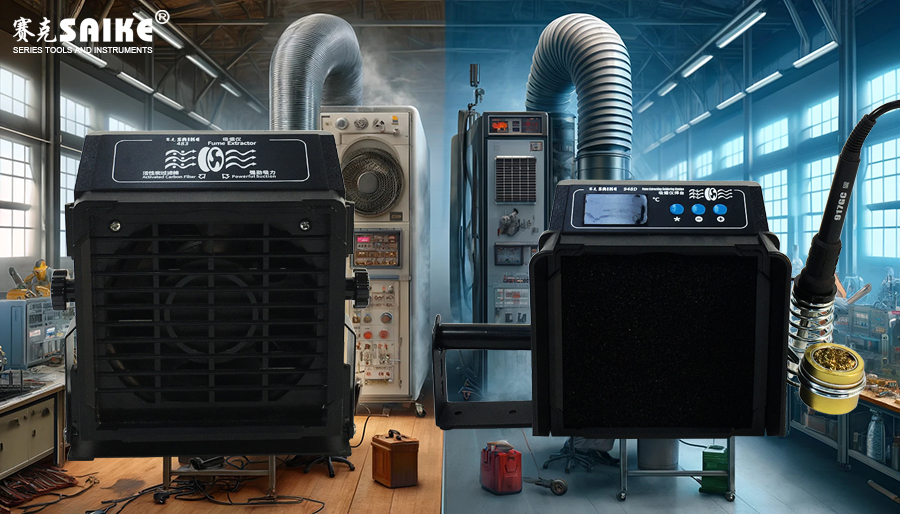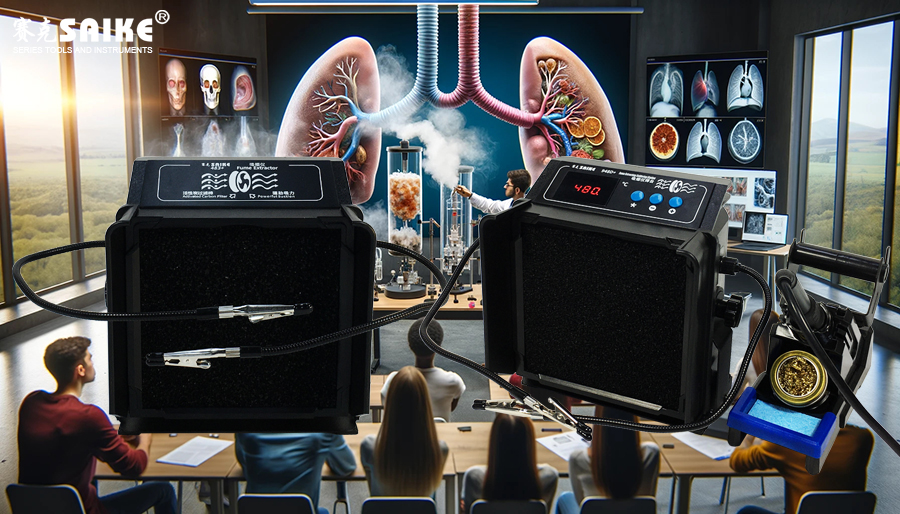
SK-YJ000XYY-KP 100003
I. Types of Fume Extractors
1.Portable Fume Extractors
– Definition and Characteristics:
– Portable fume extractors are compact and easy to move, suitable for small workstations or environments where frequent relocations are needed.
– They are typically lightweight, easy to install, but have relatively limited suction and filtering capabilities.
– Applicable Occasions:
– Ideal for small-scale electronic assembly, laboratory bench work, etc.
2.Stationary Fume Extractors
– Definition and Characteristics:
– Stationary fume extractors feature a larger size, stronger suction, and filtering capabilities, suitable for fixed work environments.
– These devices often include multiple filtering systems and more complex exhaust facilities, allowing for continuous operation and longer maintenance cycles.
– Applicable Occasions:
– Suitable for large factories, welding stations in workshops, large laboratories, etc.
II. Selection Criteria
1.Suction Requirements:
– Choose the appropriate suction strength based on the amount of smoke generated during operations. Welding metals or using large amounts of chemicals may require stronger suction.
2.Filtering Efficiency:
– Select fume extractors with efficient filtering systems, such as those equipped with HEPA (High-Efficiency Particulate Air) filters and activated carbon layers, to ensure effective removal of fine particles and harmful gases.
3.Noise Level:
– For laboratories and precision workspaces requiring a quieter environment, choosing equipment with lower noise levels is crucial.
4.Ease of Operation and Maintenance:
– The equipment should be simple and intuitive to operate, and maintenance (such as filter replacement) should be quick and convenient. Portable devices are typically easier to maintain.
5.Energy Consumption and Cost:
– Consider the energy consumption and long-term operating costs of the equipment. Although efficient equipment may have a higher initial investment, it may be more economical in the long run.
6.Brand and After-Sales Service:
– Choose a reputable brand and pay attention to the technical support and after-sales service they provide, which is crucial for the long-term operational stability of the equipment.
III. Considerations for Specific Environments
1.Portable Fume Extractors:
– Advantages: Lightweight, easy to carry and store, suitable for small or temporary jobs.
– Disadvantages: The relatively small filtering capacity and suction may not be sufficient to handle large amounts of smoke.
2.Stationary Fume Extractors:
– Advantages: Strong suction, good filtering effect, suitable for environments requiring long-term continuous use.
– Disadvantages: High installation costs and space requirements, not easy to move.
IV. Conclusion
Choosing the right fume extractor is a crucial step in ensuring a safe and healthy work environment. Both portable and stationary fume extractors have their advantages and application scenarios. Selecting the appropriate model and configuration based on the actual work environment and needs is essential. Additionally, regular maintenance and reasonable operation are key factors in ensuring equipment efficiency and prolonging its service life.


